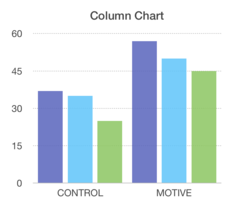Conspicuous conservation
Conspicuous conservation is a term which describes consumer behavior, in which consumers purchase environmentally friendly products in order to signal a higher social status.[1]
Origins
The term is derived from the related term conspicuous consumption, coined by economist and sociologist Thorstein Veblen in his 1899 book The Theory of the Leisure Class: An Economic Study in the Evolution of Institutions. Veblen described a tendency among certain sections of the nouveau riche to uses their purchasing power to display prestige.[2][3]
The term conspicuous conservation was coined by University of Syracuse economics professor, Seymour Sacks, who first mentioned the term in a private conversation.[4][5][5]
Experiments

Between 2007 and 2009, Psychology professors, Vladas Griskevicius (University of Minnesota), Joshua M. Tybur (University of New Mexico), and Bram Van den Bergh (Rotterdam School of Management) conducted a series of experiments investigating conspicuous conservation. In the resulting paper, Going Green to Be Seen: Status, Reputation, and Conspicuous Conservation they argued that "buying such products can be construed as altruistic, since green products often cost more and are of lower quality than their conventional counterparts, but green goods benefit the environment for everyone".[1] Because altruistic behavior might function as a costly signal of social status, conspicuous conservation can be interpreted as a signal of high status.[6] Their experiments showed that activating status motives led people to choose green products over more luxurious non-green products. The status motive increases the willingness to buy green products in public (but not in private) settings and in settings where green products cost more than non-green products. According to the authors, status competition can thus be used to promote pro-environmental behavior.[1]
See also
References
- Griskevicius, Vladas; Tybur, Joshua M.; Van den Bergh, Bram (2010). "Going green to be seen: Status, reputation, and conspicuous conservation". Journal of Personality and Social Psychology. 98 (3): 392–404. doi:10.1037/a0017346. ISSN 1939-1315. PMID 20175620.
- Sexton, Steven E.; Sexton, Alison L. (May 2014). "Conspicuous conservation: The Prius halo and willingness to pay for environmental bona fides". Journal of Environmental Economics and Management. 67 (3): 303–317. doi:10.1016/j.jeem.2013.11.004. ISSN 0095-0696.
- Veblen, Thorstein. (1899) Theory of the Leisure Class: An Economic Study in the Evolution of Institutions. New York: Macmillan. 400 pp., also: 1994 Dover paperback edition, ISBN 0-486-28062-4, 1994 Penguin Classics edition, ISBN 0-14-018795-2.
- White, Ron D. (June 1, 1978). "Growth versus Conservation: A Veblenian Perspective". Journal of Economic Issues: 433 – via ProQuest.
- White, Ron D. (June 1, 1978). "Growth versus Conservation: A Veblenian Perspective". Journal of Economic Issues. XII (2) – via ProQuest.
- Griskevicius, Vladas; Tybur, Joshua; Van den Bergh, Bram (2010). "Going Green to Be Seen: Status, Reputation, and Conspicuous Conservation". doi:10.1037/e621072012-217. Cite journal requires
|journal=(help)
Further reading
- Griskevicius, Vladas; Tybur, Joshua M.; Van den Bergh, Bram (2010). "Going green to be seen: Status, reputation, and conspicuous conservation". Journal of Personality and Social Psychology. 98 (3): 392–404. doi:10.1037/a0017346. ISSN 1939-1315. PMID 20175620.